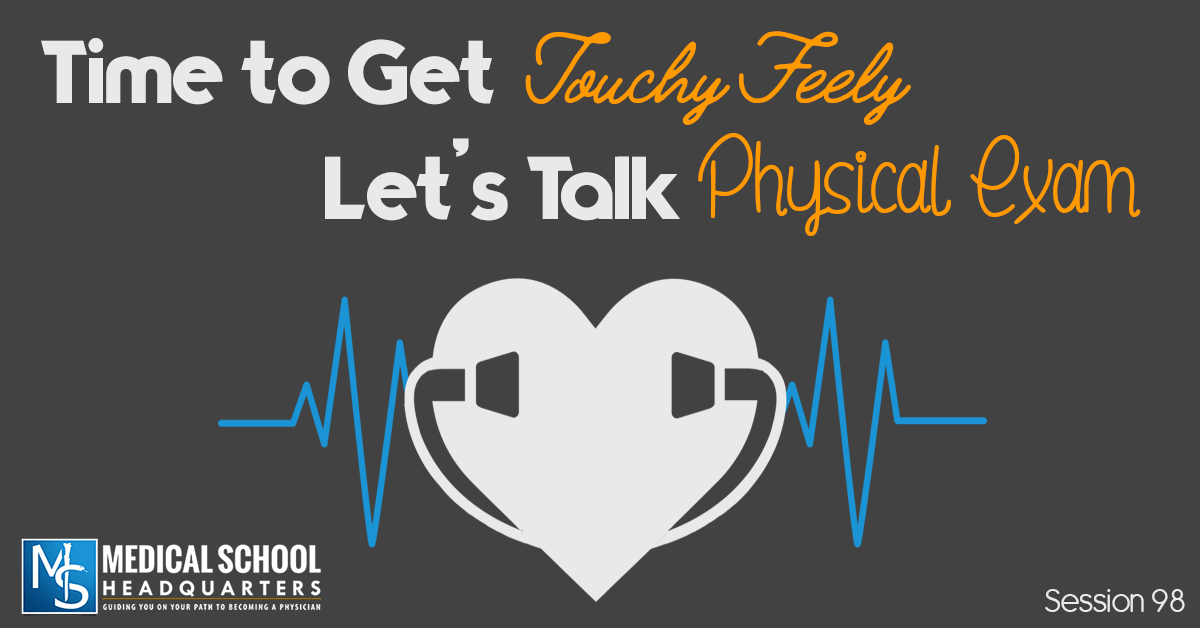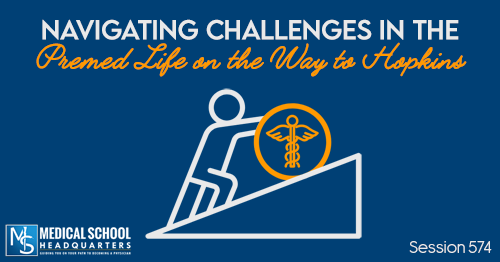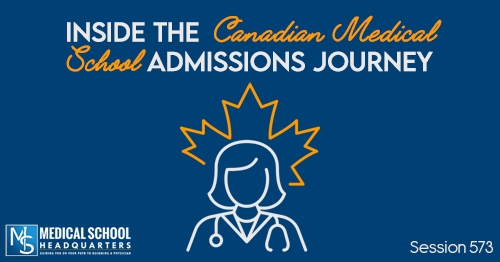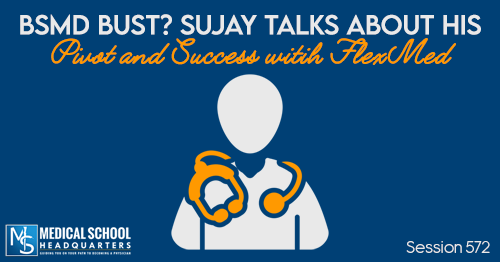Apple Podcasts | Google Podcasts
Session 98

In today’s episode, we talk all about physical exams. Specifically, how do you view your physical exams going from medical school to being a practicing doctor?
In our search to figure out the topic for this week, Allison came across a great, beautiful piece featured in The New York Times written by Dr. Danielle Ofri, an associate professor at New York University. Her most recent article, “The Physical Exam as a Refuge,” raises a number of great points that speak not only to physicians but to medical students, as well.
In this episode, we will try to dissect these points for the listeners as well as share our insights so students will walk away with better understanding about this topic.
Listen to this podcast episode with the player above, or keep reading for the highlights and takeaway points.
Changing attitudes about the physical exam and its role in medical school:
- Changing the mindset as physicians and advisors in the way they view the medical exam.
- Learning the physical exam in your first year at medical school.
- The physical exam as part of the medical school curriculum.
- Students entering the wards and seeing physicians, their mentors barely examining people at all.
- Electronic medical record duties.
- Things you need to do when a “complicated” patient comes into your office.
Making time for the physical exam in a busy medical practice:
- Realizing that time spent on direct patient care is relatively short.
- Other things you need to do aside from direct patient care: ordering new labs and tests, reviewing old ones, writing notes, talking to other team members.
- Dealing with the guilt and longing as doctors for skimping some parts of the exam or not doing it well.
How the physical exam changes as you go from medical student to physician:
- 3rd-year students having the most time available to spend with the patient and being the go-to for patients.
- The challenges during residency, having so many things to do at so little time.
- Diagnosing the patient through history and physical exam.
- History as the hallmark in figuring out what’s going on with the patient.
- The upside of 90% history and 10% exams.
- The number of test ordering done in practice vs. residency.
How the physical exam differs in neurology:
- The beauty of the neurologic exam that they do that other branches of medicine don’t
- What is a good neurologist?
Could better physical exams reduce the need for expensive tests?
- What drives the need for a number of tests being done?
- Dealing with lawsuits: Just a matter of “when”
- Annual exams turning into a not-so-comprehensive one
- Allison’s pet peeve
The importance of the physical exam to medical practice:
- The good —bringing back the importance of physical exams
- Not letting all these pressures to allow the skills you’ve honed to disintegrate through your fingers.
- Non-romantic intimacy with patients
Some pieces of advice for premed students:
- Start from the history and the physical exam—everything else follows.
- Fight with the pressures every day and keep up the fight.
- Take our knowledge and experience as well as Dr. Ofri’s piece, as you’re doing your physical exams.
- Don’t get disillusioned to not pushing through with going to medical school.
- Do not type notes as you’re sitting with patients.
- Stay true to who you are!
Links and Other Resources:
- Check out my Premed Playbook series of books (available on Amazon), with installments on the personal statement, the medical school interview, and the MCAT.
- Related episode: Welcome to Your 3rd Year of Medical School.
- Related episode: Prescription Writing 101 (with Example Prescriptions).
- Need MCAT Prep? Save on tutoring, classes, and full-length practice tests by using promo code “MSHQ” for 10% off Next Step full-length practice tests or “MSHQTOC” for $50 off MCAT tutoring or the Next Step MCAT Course at Blueprint MCAT (formerly Next Step Test Prep)!











